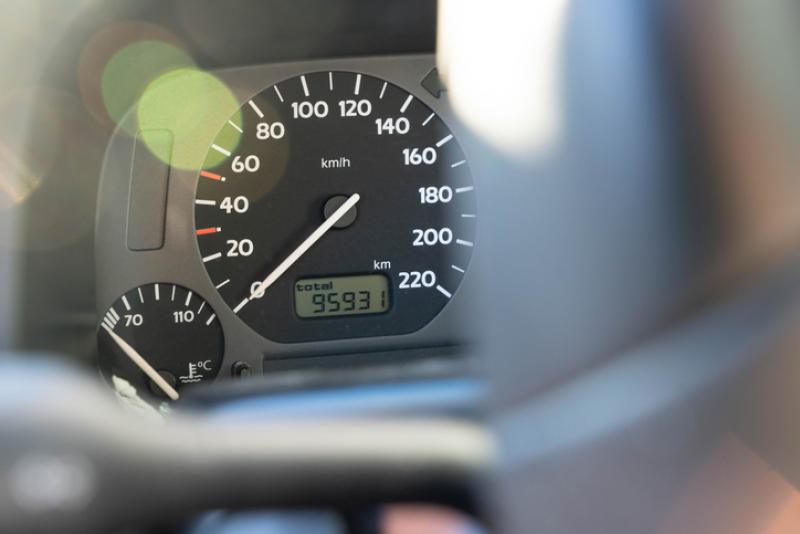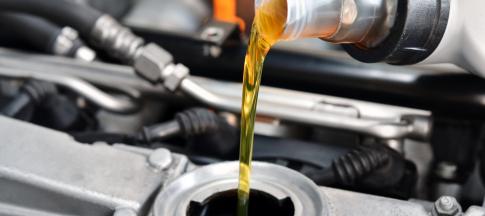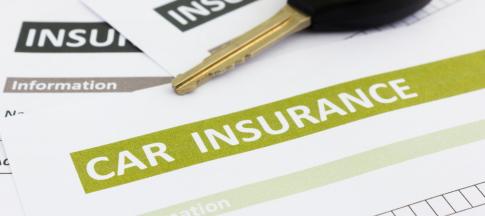
Buying a used car comes with some risks, including clocking. Clocking can hide the true mileage of a used car, tricking buyers into paying more for a less valuable vehicle.
But there are ways to spot and avoid clocking so that you can protect yourself and your wallet when shopping around for a used car.
What is car clocking?
Car clocking happens when the total miles travelled displayed on a car’s dashboard is tampered with. In most cases, it means winding back a car’s mileage.
The tool that keeps track of how far a car travels in its lifetime is called an odometer. It’s possible to tamper with the odometer and lower the total miles displayed, making it look like the car has travelled less than it actually has.
In 2020, Rapid Car Check found that 6.32% of the seven million cars tested for mileage discrepancies failed.
According to the official GOV website, there were 41.2 million licensed vehicles in the UK at the end of June 2023. If we used the same 6.32% fail rate here, that means that there could be as many as 2.6 million clocked cars in the UK today.
Why do people clock cars?
Clocking a car to deceive others is also known as mileage fraud.
There are two main reasons why people commit mileage fraud, with the first being to sell used vehicles for a higher price than they’re worth.
If a car is worth £5,000 and has 80,000 miles on the clock, the seller could probably get more for it if the mileage was only 50,000.
According to Motorway, each 20,000 miles added to a car’s mileage can reduce its value by an average of 20%. So, if a car is worth £5,000 then travels another 20,000 miles, its price could drop by £1,000.
Another reason why people clock cars is to avoid the big pence-per-mile charges associated with going over your agreed mileage at point of sale.
Cars bought on finance often come with a mileage allowance. If you go over your allowance, you’ll be charged a fee.
By clocking their financed car, someone can avoid pence-per-mile charges by making it look like they’ve travelled under the mileage limit, when in reality they’ve exceeded it.
Is car clocking illegal?
Clocking a car isn’t illegal in the UK, but selling a car knowing it’s been clocked is. So, if you’ve bought a car without being told it has been clocked, you’ve fallen victim to mileage fraud, which is a crime.
Why is car clocking dangerous?
Car clocking isn’t just a financial scam. Pretending that a car has been used less than it really has can put the driver at risk.
Cars with a higher mileage tend to have more worn parts, especially if they haven’t been maintained well over time.
If you buy a car assuming it has only travelled 20,000 miles, but it has really travelled 40,000, the parts could be twice as worn than what you assume.
On top of this, the sensors in a car with a clocked mileage may not be able to flag certain mechanical issues because the data they’re fed suggests that the mileage is lower than it really is.
For instance, the car won’t show the service light as the sensors think it hasn’t reached the mileage to require a service yet.
Lastly, clocked cars can pose a problem with legal matters and insurance. When a car gets in an accident, the car’s computer data can be used to determine speed and performance levels at the time of the event. If the car’s been clocked, the computer’s data may be inaccurate.
While this isn’t a safety issue, it’s also worth noting that a car’s manufacturer warrantee may become void if it is discovered that the vehicle has been clocked.
Can newer cars be clocked?
While older cars use mechanical odometers, newer ones have switched to digital. But both kinds of odometers can be clocked. In fact, it can be easier to clock a digital odometer.
Can electric cars be clocked?
Yes. Electric cars can still be clocked because they also use digital odometers like many modern cars.
How to spot car clocking
There are some key signs that may indicate a car has been clocked.
The MOT certificate mileage and odometer don’t match
If the mileage shown on the odometer of the car you’re thinking of buying and its most recent MOT certificate don’t match, this could be a red flag.
You can also check the car’s service history documents to check the mileage it had on its last service.
Check a car’s history easily using HPI’s online tool.
The car has excessive wear and tear
It’s common for older cars to have a higher mileage than newer ones. This is why the wear and tear of the vehicle can sometimes tell you something about its mileage.
This is especially true if the used car you’re looking to buy appears to have a very low mileage. Maybe the car only has 10,000 miles on the clock but the steering wheel, gear stick and brake pads are very worn.
These car parts can be changed to hide age or mileage, but if they haven’t and look very worn, this could be a warning sign. Look out for other signs of high usage like chipped paint or glass, too.
The car is old but has very low mileage
Sometimes, cars just don’t get used a lot and age without much mileage. But a lot of the time, older cars have a higher mileage.
So, if you come across an old car with very low mileage, it may have been clocked. Be sure to check the car’s service and MOT history to see what the true mileage is.
What to do if you think you’ve bought a clocked car
If you think that the car you bought has been clocked, you should:
- check your warranty documents if the seller has provided you with any
- contact the seller to see if they were aware of the issue or will discuss as possible refund
- contact the Motor Ombudsman or Citizens Advice if the seller won’t cooperate
- avoid using the car any further if you think it’s dangerous to drive
To avoid car clocking, make sure you only buy from genuine, trustworthy dealers with a lot of good reviews.


